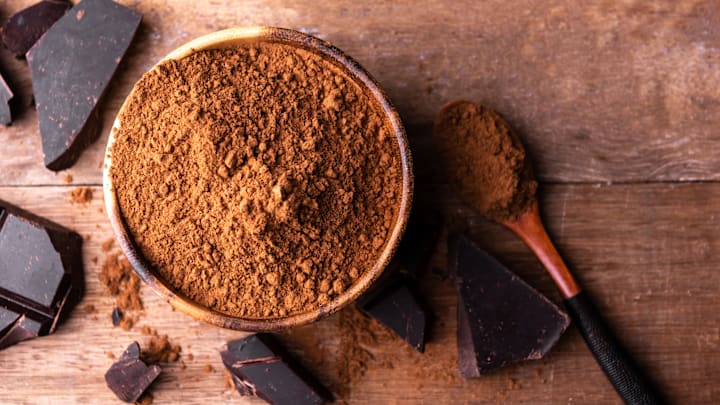Cacao and cocoa are deployed in such varying ways on the labels of chocolate products that it’s difficult to tell what the difference is—or if they’re just different spellings of the same word. These days, they’re often regarded as their own distinct terms. But they didn’t start out like that.
Cacao vs. Cocoa
In the 16th century, Hernán Cortés and other conquistadors Hispanicized the Nahuatl word cacahuatl—beans from what we now call the cacao tree or cocoa tree—to cacao. Though other European languages quickly adopted the word, it was sometimes rendered cacoa, which, according to the Oxford English Dictionary, was either a spelling error or the result of confusion over how to pronounce it.
Sometimes, people mistakenly used cacao to refer to the fruit of a different buzzy New World plant: coconut, or coco. This mix-up was likely a factor in the birth of yet another variant spelling of cacao—cocoa. Both terms have been used for the tree itself (whose scientific name is Theobroma cacao), the tree’s pods, and the seeds inside the pods.
Some of that interchangeability still exists today. The aforementioned cacao tree vs. cocoa tree is one example. Another is cocoa bean vs. cacao bean—they’re just the one bean from that one tree. But in manufacturing and culinary contexts, cacao and cocoa typically have separate definitions.
To make any kind of cacao or cocoa product, you first need to crack open the pods, scrape out the seeds (i.e. “beans”), and let them ferment. After that, you dry them out. Here’s where the difference comes in: Cocoa products require roasting the beans at a high temperature, while most cacao products are exposed to much lower temperatures. Because cacao undergoes less processing, it retains more of its mineral content—especially iron—and antioxidant properties. But it’s also more bitter than cocoa.
Can You Substitute Cocoa Powder for Cacao Powder?
While you can substitute cocoa for cacao powder in recipes, and vice versa, there are a couple factors to consider before you do. Flavor is one: Since cacao powder is more bitter, expect the end result to have a bit more of a' bite. According to The Pioneer Woman, cacao powder also absorbs more liquid than its cocoa counterpart, so you might need to either add a little more liquid or use a little less powder.
Have you got a Big Question you'd like us to answer? If so, let us know by emailing us at bigquestions@mentalfloss.com.
